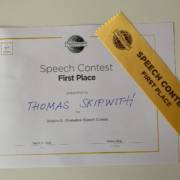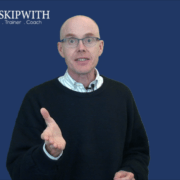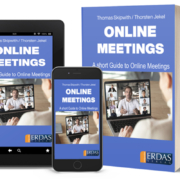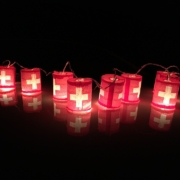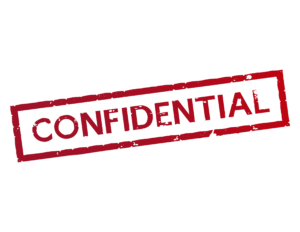Posts
3 Keys to Effective Online Presentations
/in English, English, Instructional video, Presentation Skills, Tips and tricks, Tips for success, Video /by Thomas SkipwithIt’s just like on TV.
/in English, Podcast, Presentation Skills, Presentation skills coaching, Tips and tricks, Tips for success /by Thomas SkipwithPut your words into action.
/in English, English, Instructional video, Presentation Skills, Presentation skills coaching, Tips and tricks, Tips for success, Training letter, Video /by Thomas Skipwith1st of August Speech: 10 Tips to succeed
/in Presentation Skills, Presentation skills coaching, Tips and tricks, Tips for success, Training letter /by Thomas Skipwith Soon the time will come again: all over Switzerland countless speakers will give a speech because of the 1st of August. The 1st of August is the Swiss national holiday. Hence there is the tradition of giving a 1st of August speech. I feel this is a worthwhile tradition, because giving a speech is always an opportunity to share a message. When else can you share your thoughts (more or less) undisturbed with a larger crowd?!
Soon the time will come again: all over Switzerland countless speakers will give a speech because of the 1st of August. The 1st of August is the Swiss national holiday. Hence there is the tradition of giving a 1st of August speech. I feel this is a worthwhile tradition, because giving a speech is always an opportunity to share a message. When else can you share your thoughts (more or less) undisturbed with a larger crowd?!
Nevertheless, it is clear to most people: you can’t please everyone. Matthias Aebischer, Swiss journalist, presenter and politician, put it beautifully in one of his speeches: “A 1st of August speech that is not criticized afterwards is like a meal in the canteen that you can’t complain about”.
For the complaints not to turn out too harsh, I have collected 10 (not conclusive) tips for a successful 1st of August speech.
Tip 1: Preparation is half the battle.
1st of August speakers are usually asked a long time in advance to speak. If you are the lucky one, do a small written brainstorming and complete the initial ideas from the brainstorming over time. Subsequently you will no longer be starring at a white sheet of paper on July 31.
Tip 2: Anyone who cannot hear you becomes a disturbing factor.
I have often experienced that the organizer skimped on the sound system or didn’t have one at all. Unfortunately I therefore could hardly hear the speaker. It only takes a few audience members to start whispering to each other and you then don’t hear anything anymore. Therefore, make sure that the audience can hear you. With more than 40 listeners I recommend you use a microphone. Preferably a lapel microphone or a headset.
Tip 3: The beginning should make them want more.
Start in such a way that the audience will pay attention to you right from the start. This can be achieved, for example, during the greeting. Instead of a plain “Dear ladies and gentlemen”, start with a personal anecdote. Then only greet the audience.
Tip 4: Choose the content so that it suits you, the occasion and the audience.
Why not talk about Switzerland? After all, it’s Switzerland’s birthday. As Switzerland is very diverse, you can really choose any topic. Nevertheless, make sure you are clear about your main message. A possible formula for the content is: a personal anecdote, the story of someone else and what you have learned from it. Especially with the personal anecdote you make your speech memorable.
Tip 5: The end is the icing on the cake.
Prepare a crisp ending. “Thank you for your attention.” is not one of them. Instead, you can summarize, relate to the beginning and/or make a call to action. The brave ones bring a suitable joke at the end. It is best to practice the last sentence several times out loud beforehand.
Tip 6: You need a clear goal in mind.
Decide on a clear main message. You are welcome to repeat the main message several times. Your main message could refer to a virtue, e.g. courage, punctuality, reliability, love, perseverance. How about “The world belongs to the brave”, “Steady wins the race” or “I am proud of Switzerland”?
Tip 7: Variety makes life sweet.
A speech that’s serious as hell won’t knock anybody off their pedestal. Switch between seriousness and lightness. If you manage to get your audience to laugh, then that’s a bonus. In addition, it is worth researching what others have already said many times before. You can do without it or on the contrary: It is so important to you that you also want to repeat it.
Tip 8: Speak so that you are understood.
Analyze the audience. Then decide whether you will give the speech in Swiss German or High German (or any other language). If you choose a language that is not your mother tongue, you should practice your speech particularly often. For example, most Swiss-German speakers find it more difficult to speak High German than Swiss-German.
Tip 9: Keep it simple, stupid.
Mark Twain said: “A good speech has a good beginning and a good end – and both should be as close together as possible.” Ask the organizer how much time you have. Many times you will get 10 – 15 minutes. If you are writing a manuscript, you know how many words it should contain. Namely: If you speak at a speed of 100 words per minute, your manuscript will contain 1’000 – 1’500 words.
Tip 10: Tell them who you are.
The audience is curious. They want to know who’s talking to them. Tell them. However, I recommend you spice it up. Don’t just enumerate what you have done in the past, but use a story to talk about yourself. For example, I could tell you how I can still remember how I grew up in Lucerne next to the Museum of Transport and what I experienced in the course of it all. Thus, the listeners casually learn who I am.
If you stick to these tips, you are already one big step closer to a 1st of August speech that will be positively remembered. I wish you every success.
If you like the blog article, share it in social media like Facebook, XING and Co.
When does a presentation start?
/in Presentation Skills, Presentation skills coaching, Tips and tricks, Tips for success, Training letter, Video /by Thomas Skipwith Many think a presentation starts with the first word. That is a good idea, but it is wrong. Above all, the presentation start is at the latest when attention is drawn to the speaker. Usually this is the point in time at which the speaker moves significantly. That means, as soon as the speaker gets up from his chair, all pairs of eyes are on him/her.
Many think a presentation starts with the first word. That is a good idea, but it is wrong. Above all, the presentation start is at the latest when attention is drawn to the speaker. Usually this is the point in time at which the speaker moves significantly. That means, as soon as the speaker gets up from his chair, all pairs of eyes are on him/her.
Recently I heard an interview by Brian Walter with Connie Podesta in the podcast “Voices of Experience” of the National Speakers Association NSA. Connie (www.conniepodesta.com) makes the point that the presentation starts much earlier. She is of the opinion that the presentation does not start on stage, but when the first contact with the potential customer takes place, that is to say many times on the phone.
What does she mean?
Before she even makes a phone call to the potential customer, she researches the customer. She is looking for a story with which she can create a good connection to the event organizer. She mentions two examples.
Example 1: Conny told the event organizer of McDonalds her personal story with McDonalds. She grew up in the same city where McDonalds opened its first store. Her father often surprised her and the family with a white bag of McDonalds. Even today she loves to go to McDonalds at the airport to drink a vanilla latte.
Example 2: When she phoned Walmart’s event organizer, she shared her father’s story. Example 2: When she phoned Walmart’s event organizer, she shared her father’s story. “My father has always been a Walmart fan and was always most happy to receive a Walmart voucher from me at Christmas. After he died, I found a valid voucher in my father’s jacket pocket. I thought a lot about what to buy with it. Finally I bought a picture frame from Walmart for a picture of me with my Dad. The picture and the frame are here in front of me on my desk.”
By the way, both times Connie was asked to tell the respective story during her key note performance.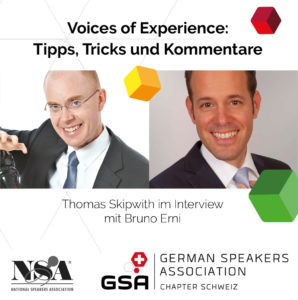
What can you take away from this for your own presentations?
- The presentation does not start on stage, but long before.
- The telephone conversation is like a short demo presentation. You show how well you understand the customer. The customer hears whether he feels comfortable with your style.
- You can use the story, if you are booked, for your appearance with the customer on stage.
Listen to the podcast here: www.thomas-skipwith.com/podcasts. (Bonus: You will here many more useful tips during the interview between Bruno Erni and myself.)
If you want to hear the original of Connie Podesta’s contribution in English, the best way is to download the Speakernomics app (formerly VoE) and listen to the April 2018 edition of “Voices of Experience”.
If you like this post, please share it on social media like Facebook, XING and Co.
PowerPoint or Prezi: Which is better?
/in Presentation Skills, Presentation skills coaching, Tips and tricks, Tips for success, Training letter, Video /by Thomas SkipwithI am often asked if I like PowerPoint or Prezi better. Unfortunately, there is no clear answer to this question. In a typical consultant manner I answer: “It depends.” It is not clear which software is better, because both have their advantages.
Is PowerPoint better?
 PowerPoint is probably known to all readers of this training newsletter. Who presents without PowerPoint? Nevertheless, it is worthwhile to think about what PowerPoint is all about.
PowerPoint is probably known to all readers of this training newsletter. Who presents without PowerPoint? Nevertheless, it is worthwhile to think about what PowerPoint is all about.
- The software follows the same logic as the other Microsoft programs Word and Excel. Many people find it correspondingly easy to operate.
- You write and draw page by page (slide by slide) – similar to a book.
- It is the de facto standard in the business world. Virtually all laptops have the software installed and you will have little trouble with it at conferences.
- The software is installed locally on the laptop/computer. You don’t need an internet connection to hold your presentation (unlike Prezi).
- PowerPoint for Windows goes well with most projectors. (The PowerPoint version for Mac should be used with caution. Also, the Mac version has less features.)
- https://products.office.com/de-ch/powerpoint
Or is Prezi better?
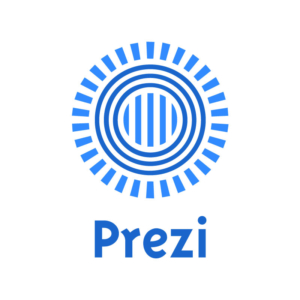 Prezi’s logic follows a different pattern. It was developed by architect Adam Somlia-Fischer, who wanted to show his audience both an overview and details on a map – without losing the overview. Following this logic, you will not find individual pages in Prezi as in PowerPoint, but a single, infinitely large area. You can zoom in and out on it. This way you can see the overview and details on a map as you like – similar to zooming in and out on Google Maps.
Prezi’s logic follows a different pattern. It was developed by architect Adam Somlia-Fischer, who wanted to show his audience both an overview and details on a map – without losing the overview. Following this logic, you will not find individual pages in Prezi as in PowerPoint, but a single, infinitely large area. You can zoom in and out on it. This way you can see the overview and details on a map as you like – similar to zooming in and out on Google Maps.
- Prezi is designed as a cloud-based application so that it can be accessed from anywhere and the files can be easily shared. Accordingly, a functioning internet connection is required. (However, there is a downloadable version for an additional charge. This can alleviate problems in hotels with poor internet connections.)
- It is ideal for explaining a city map to tourists or presenting a floor plan of a production line, for example.
- Prezi fulfills the criterion to do something different than everyone else. In this respect it can be a good change and thus increase the attention of the audience.
- If all other speakers use PowerPoint at a conference and you present with Prezi, you will have to overcome additional technical hurdles.
- It is difficult to produce participant documents. Usually it means an extra effort.
- If you use Prezi badly, you can cause nausea among your audience. (In the past I already had the feeling that I was on a roller coaster.)
- The software needs (like any software) a more or less long training period.
- https://prezi.com
Conclusion
What can you take with you for your own presentations?
- Both are good tools. It is crucial that they are used correctly, though.
- So it is not a question of “either-or”, but of which tool better serves your purpose.
- Use either tool correctly – and it has a great impact.
If you like the post, why not share it in the social media such as Facebook, XING and Co.?
Thomas Skipwith
Thomas Skipwith helps executives, companies and individuals to present like a pro and avoid losing business and reputation through poor and boring presentations.
He is a regular speaker at major events and a five-time winner of the European Championship of Public Speaking.
Offerings
Contact
DESCUBRIS Ltd.
Thomas Skipwith
Bachmattstrasse 10
CH-8966 Oberwil-Lieli (near Zurich)
T: +41 41 630 39 90
E: speak [aet) thomas-skipwith.com

